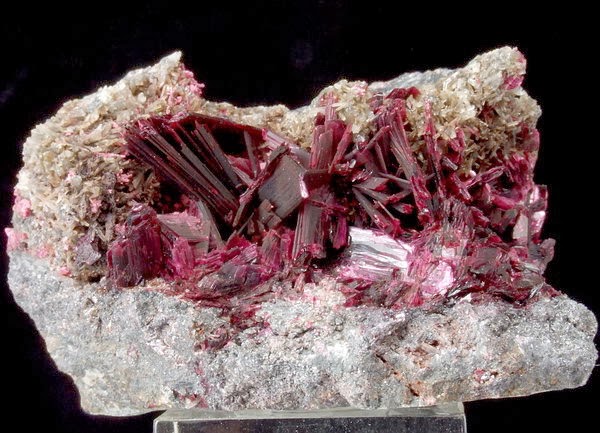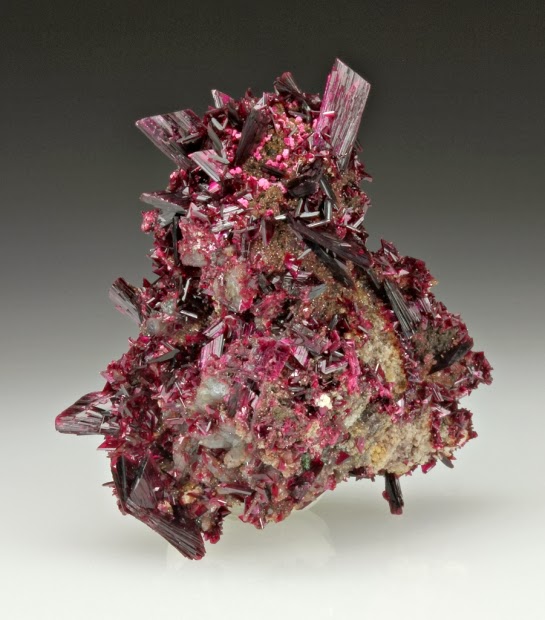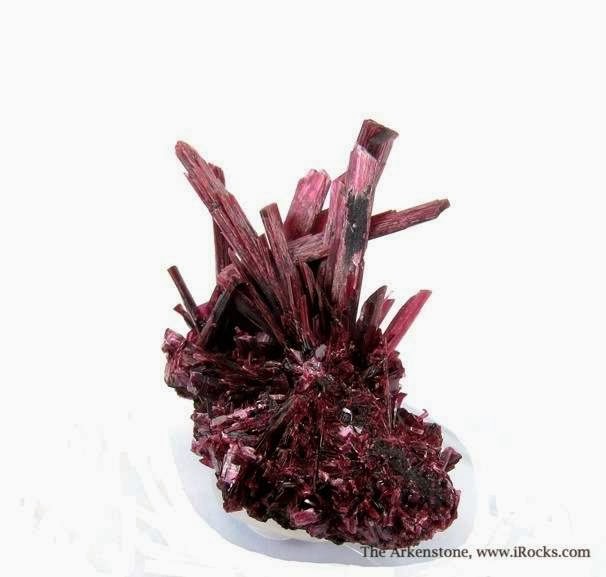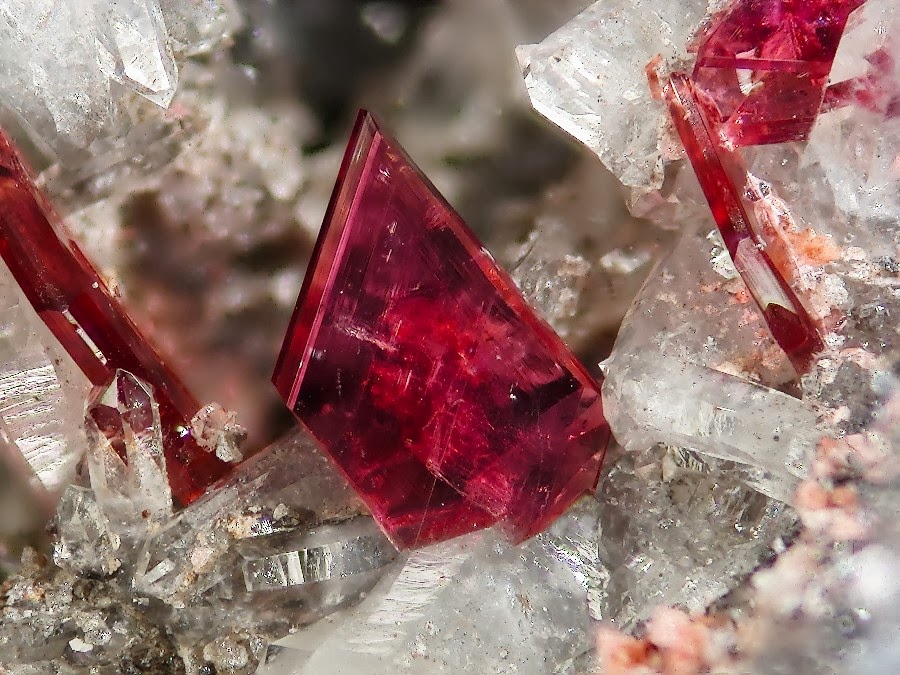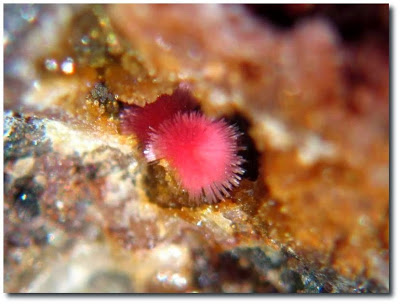
Chemical Formula: Co3(AsO4)2 · 8H2O
Locality: Grube Daniel, Schneeberg, Germany.
Name Origin: Named from the Greek, erythros for “red.”
Erythrite or red cobalt is a secondary hydrated cobalt arsenate mineral with the formula (Co3(AsO4)2 · 8H2O). Erythrite and annabergite (Ni3(AsO4)2·8H2O) (nickel arsenate) form a complete series with the general formula (Co,Ni)3(AsO4)2·8H2O.
Erythrite crystallizes in the monoclinic system and forms prismatic crystals. The color is crimson to pink and occurs as a secondary coating known as cobalt bloom on cobalt arsenide minerals. Well-formed crystals are rare, with most of the mineral manifesting in crusts or small reniform aggregates.
Erythrite was first described in 1832 for an occurrence in Grube Daniel, Schneeberg, Saxony, and takes its name from the Greek έρυθρος (erythros), meaning red. Historically, erythrite itself has not been an economically important mineral, but the prospector may use it as a guide to associated cobalt and native silver.
Erythrite occurs as a secondary mineral in the oxide zone of Co–Ni–As bearing mineral deposits. It occurs in association with cobaltite, skutterudite, symplesite, roselite-beta, scorodite, pharmacosiderite, adamite, morenosite, retgersite, and malachite.
Notable localities are Cobalt, Ontario; Schneeberg, Saxony, Germany; Joachimsthal, Czech Republic; Cornwall, England; Bou Azzer, Morocco; the Blackbird mine, Lemhi County, Idaho; Sara Alicia mine, near Alamos, Sonora, Mexico; Mt. Cobalt, Queensland and the Dome Rock copper mine, Mingary, South Australia.
Physical Properties
Cleavage: {010} Perfect
Color: Colorless, Violet red, Light pink, Purple red.
Density: 3.06 – 3.18, Average = 3.12
Diaphaneity: Transparent to subtranslucent
Fracture: Sectile – Curved shavings or scrapings produced by a knife blade, (e.g. graphite).
Hardness: 1.5-2 – Talc-Gypsum
Luminescence: Non-fluorescent.
Luster: Pearly
Streak: pinkish red
Photos :
